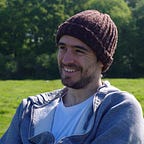9 key messages for communicating science on social media
I traveled to Norway, the USA and Canada to talk to some of the finest digital producers and managers working in online science communication. Here are some of the key messages that came up again and again. An executive summary, if you will.
Go for quality, not quantity
The social media landscape is crowded. Your posts are getting ever-diminishing reach as more and more people publish more and more stuff (and pay to displace your content with theirs). The best tactic if you’re working with tight constraints, almost no money, and a real goal to communicate science, is to really focus on creating content and posts that add value to people’s lives, entertain and educate. Better content will most likely produce larger reach, but importantly by aiming to have a bigger impact on the people who do see your content, you’ll be closer to achieving your goals.
Be creative and unusual. Experiment or you’ll be left behind
You really can’t predict what your audience will like, so try new things to see what works for you. With such saturation, it takes something a little unusual to get people’s attention.
Have personality, and know what that personality is
‘Personality’ is always touted as a key requirement for social media, but remember that personality means being uniquely you. What is your organisation uniquely good at? What do you offer that nobody else does? It doesn’t have to be witty gifs and silly science jokes (though it can be!) — find your niche and revel in it, through your tone of voice, content choices, and style.
Represent science in the right way for you, and be wary of watering down to the point of being destructive
Social media isn’t “ruining science”, but as a producer you do have a responsibility to reflect science honestly. You don’t have to always adhere to the most popular social media format or ‘rules’, and remember that it’s a myth that people’s attention spans are so short that all content has to be under 5 seconds long. If learning is your main goal, resist the temptation to reduce your posts to the point of insignificance, and be wary of misrepresenting the process of science in the interests of buzzy brevity.
Don’t neglect promotion
This is the single biggest failing for many people in our industry. We put huge energy and care into content creation, but don’t invest the same time and money into promotion. If I could give you one piece of advice, it’d be to spend all the time and money you have pencilled in for your next project on promoting your current one. I know this is hard with funding pressures and the need to always show new work, but think about it.
And don’t let old content die
This follows on from the above. The vast majority of your content is probably pretty evergreen, but in our enthusiasm to create new and exciting campaigns, we let old videos, images and ideas slip down our feeds into internet obscurity. Breathe life back into them, tweak them to make them timely or relevant again, and help them reach a new audience.
Think about whether you’re telling stories or facts
‘Storytelling’ is a buzzword, but it really is worth stopping to think about, and just taking the time to consciously address it will improve your work. Here’s some advice on where to start.
Use the platforms you’re on
This is an obvious one, but to understand what works and what doesn’t on any given platform, you need to understand it as a user yourself. Follow the best creators both in science and far beyond. Develop a real sense for what’s working and what isn’t, what the trends are, and then you’ll be able to see which are useful to you, and which are fads that you, as a science communicator, need not pander to.
Pay attention to your stats, but be selective about which one(s)
Unless you’re particularly data-savvy and experienced, the volume of available statistical info can be overwhelming. So for most people, it’s worth tackling them one at a time. Identify your key goal, and which stat best reflects progress towards that, and learn from that alone. Once you’ve got that down, add one more. Producing reports full of big numbers looks great, but is hard to make any practical change from.
I go into more detail about all of these throughout the other pages in this publication, but these are themes that came up again and again in the course of my Fellowship, and I’d encourage anyone starting out (and probably with experience, too), to keep them in mind.
This post forms part of the publication, ‘Communicating Science with Social Media’, which is the product of a 2017 Winston Churchill Fellowship. Read more about the project here, and for more about me, including examples of my own work, visit anthony-lewis.com.
